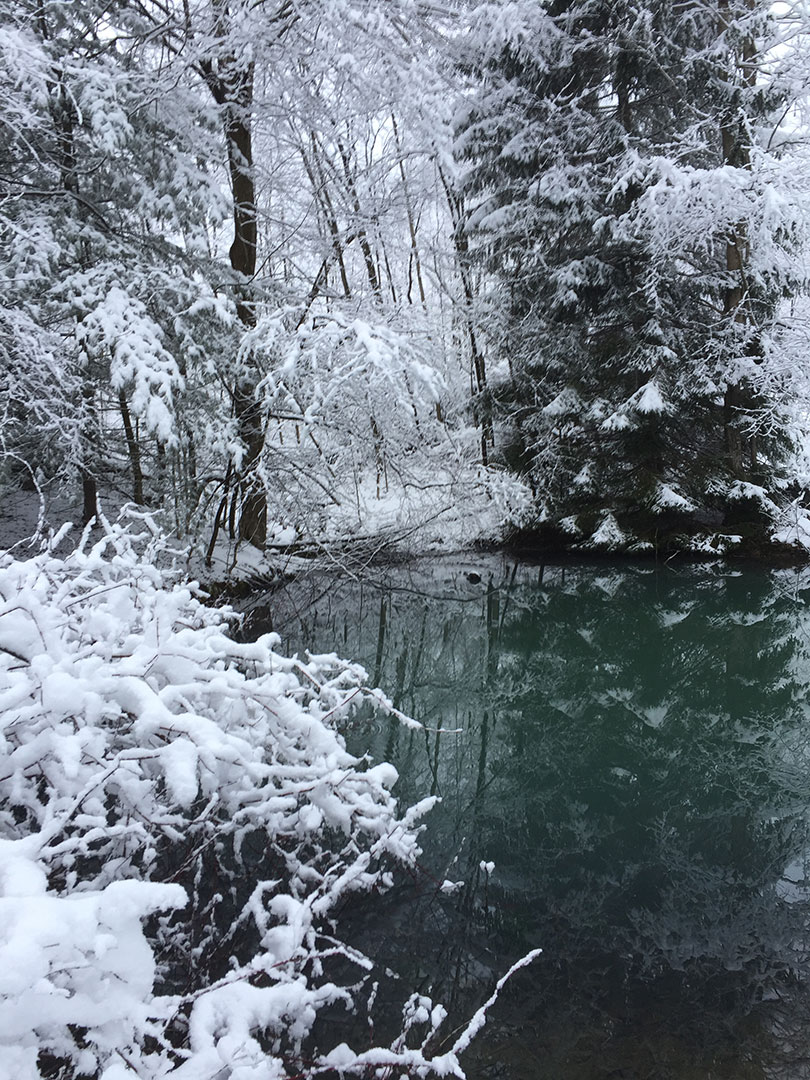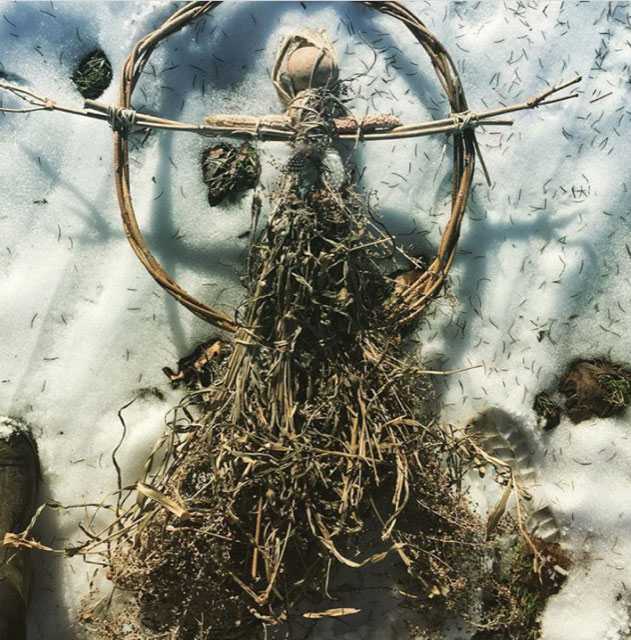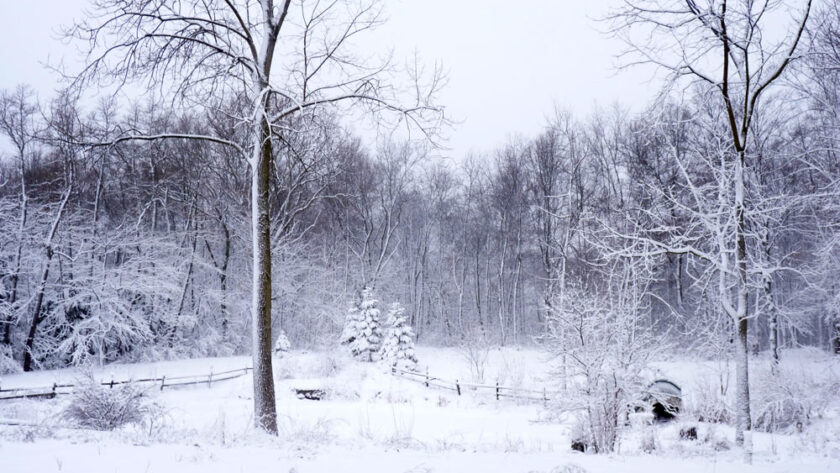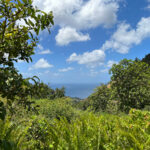Imbolc was traditionally a Gaelic holiday celebrated in the holiday celebrating the first signs of spring. When I first started down the path of Druidry, I never felt very connected to Imbolc as a holiday because there seemed to be this huge disconnection between the holiday’s traditional roots and what I was seeing on my own landscape. Part of this is that the weather in the UK is much milder than where I’ve lived and I’m more likely to see at the Spring Equinox–or later–what might be first signs of spring at Imbolc. I thought it was funny when I’d see rituals where I should decorate my altar with snowdrops when they were still another 1-2 months away from coming forth!

My own issue with Imbolc speaks to what I see as one of the major challenges we have in Druidry, here in North America and globally: It’s actually pretty hard to take the traditions of ancestors that were rooted in one place (the British Isles) and port it to another place (like North America). Once they are removed from their context, they lose a lot of rich meaning. But it’s not just a contextual problem, but also a lifestyle one: the ancestors of the druid tradition also lived a non-industrial agrarian life, so different from modern life. Some of the traditional activities don’t make sense to you if you are living, say, an urban lifestyle (like the lactating of ewes!) Further, as an animist, I don’t get into the deity-specific focuses of the holiday, creating yet another kind of disconnection. So there are multiple points of disconnection: disconnection with the way of life of the people who originated the holiday, a disconnection with what is happening on my own landscape, and also, perhaps a cultural disconnection.
What I thought I’d do in this piece is share with you some of my own Imbolc symbolism, adapted for someone living in the Allegheny Mountains of Western PA, and talk about the stories behind the symbols and how I got there. I hope this will offer an example of how to adapt a holiday associated with the druid tradition (but maybe one you don’t immediately resonate with) to your local landscape. This allows you to practice a wildcrafted and ecoregional druidry that is more rooted in local landscape and place I do think it’s important to recognize the difference between activities, observances, and rituals–celebrating a holiday to me isn’t just about doing a particular ritual, but rather, engaging in a number of activities and observances that mark that time of year. Thus, I’m not really talking much about rituals here, but more, my adapted Imbolc themes. And like those original peoples who developed holidays, these choices are very rooted in my own local landscape, regional culture, and my lifestyle. I hope that you can use them as a guide for developing your own.
Weather, Groundhogs, and Prognostication.
This first symbol is rooted in the rodent weather prognostication that happens throughout the US. Throughout the US in several different states that have German roots, American Groundhogs look to see their shadows and foretell the coming of spring. I happen to live about 45 minutes south of the most famous Groundhog of them all, Punxatawney Phil. Today marks Phil’s 134 years of weather predictions. Yet, this tradition is much older. The tradition is rooted in Germany, where they used a European Badger to predict the weather this time of year. When the PA Germans moved here to Pennsylvania, they found that the Groundhog (or Woodchuck) was the more appropriate prognosticator, and the tradition has continued on. All throughout PA and now in many other states, the Groundhog is honored this time of year for his service in helping predict the end of winter. There’s a lot of fun that you can have in honoring the groundhog and doing some predictions of your own this time of year. If we broaden this tradition for personal celebration, you might think about Imbolc as being a good time to do some divination for things to come.
Strategy for Selecting this Symbol: One strategy for adapting your Druidry locally is to look at more local or regional customs that might align with your holiday. Look for annual traditions, large festivals, or other traditions that might take place at or near your holiday. In my case, adding Groundhog Day and prognostication/divination to my wheel of the year was an easy choice, both because of where I live but also because of my own cultural heritage as having many PA Dutch ancestors.
Tapping the Maple Trees

The second symbol that has become a cornerstone of my own Imbolc traditions is tapping the maple trees. The sap in the trees will run when the temperatures go above freezing during the day and below freezing at night. For where I live, this almost always occurs in the two weeks around Imbolc. In fact, I consider Imbolc officially “here” the first day when the sap is running and I do my best to tap the trees on that day if possible (which doesn’t always happen, but usually I can get within a day or two!) A big part of my Imbolc celebrations includes tapping the trees, singing to them, making offerings to the trees and doing ritual work, and drinking their fresh sap as a blessing and cleansing. Usually, between Imbolc and the Spring Equinox, we get together with some other friends and do a day of boiling the sap–a way to share in community and the activity of the season.
Strategy for Selecting this Symbol: A lot of the druid wheel of the year holidays focus on changes in the landscape. Start by observing the time of year and look to see what is happening around you. What is happening with wildlife? Precipitation and weather? Plants and trees? Through these observations, you’ll see that things can be both very quick (e.g. the changes that happen on the landscape after a hard frost) or quite subtle. It took me a number of years–and access to other people who knew about maple sugaring–to select this symbol and practice. Now, it is absolutely central to my activities this year and is certainly part of our regional culture here.
Snow Spirals and Ice Observations

The weather this time of year is very dynamic, perhaps more so than most other times a year, at least in this ecoregion. We have periods of snow, periods of ice, and periods where the temperatures thaw. I like to do a lot of work with snow and ice this time of year, tied to what is happening in the landscape. I pay attention to the snow and ice, I make snow spirals to bless and protect the land. I also like to spend extra time at our stream and pond observing the melting and freezing of the waters.
Strategy for Selecting this Practice: For each of the eight holidays, I like to spend time in observation of the landscape. I usually change the focus of my observations based on the holiday–for this holiday, the waters are the most dynamic and hence, where I spend some of my focus.
The Butzemann (Magical Scarecrow)
The newest addition to my own Imbolc celebrations is the creation of the Butzemann. My

grandmother used to keep a scarecrow in her garden, and I always thought it had a life of its own–in fact, traditionally, many scarecrows did! The Butzemann is another tradition that comes from PA Dutch culture and is, essentially, a magical protective scarecrow. You build the Butzemann at Imbolc, out of things that will burn, preferably, materials from last year’s garden and from the land around you. At the spring equinox, you walk the Butzemann around the property and invite a good, protective spirit into the Butzemann. You give the Butzemann a name (there are some fairly complex traditions around naming, but essentially each year, you add a new name to your Butzemann, but keep all the older names as additional names. Eventually, the name gets quite long indeed, demonstrating the Butzemann’s legacy over the years). You hang the Butzemann somewhere prominent for the remainder of the year, where it can protect your crops, flocks, and home for the growing season. I also like to make offerings to my Butzeman at each of the major holidays where he is active (Beltane, Summer Solstice, Lughnasadh, and the Fall Equinox). At the end of the growing season, by no later than Samhain, you burn the Butzemann so his spirit can go on the wild hunt. If you don’t burn the Butzemann, the good spirit will leave anyways and your Butzemann could become possessed with a bad spirit. At the end of the season, you may also save some special materials to construct your Butzemann the following Imbolc.
Strategy for Selecting this Practice: I was so excited to learn about this practice from the folks who are developing Urglawee (PA Dutch Heathenry). I was looking for a practice that helped tie the growing season together and that would protect our flocks and land. Wassail traditions are part of the blessing and protection of the land but are very orchard and tree focused. This tradition offers another layer and is a wonderful way to tie the seasons together and offered me another great bioregional and cultural practice.
Sowing the First Seeds of the Season

On the full moon nearest to Imbolc, we start our first seeds of the year for our garden (other than garlic, which you plant the previous fall). I think this is an important part of our traditions surrounding Imbolc because it lets us focus not on the remainder of winter (all six weeks of it, according to Punxataweney Phil) but rather, this pulls us into the light half of the year. Tending the seeds, watching them grow, and planning for the future is a powerful reminder that spring will come again.
Strategy for Selecting this Practice: This one is fairly pragmatic. We have big gardens on our five-acre homestead and Imbolc is usually about 12 weeks out from our first frost–the first opportunity to start seeds for the year. This is when we start slow-growing herbs like Lavender and Sage, our allium crops (onions, shallots, leeks, and chives), and our greenhouse starts. It’s more meaningful to do this work tied to a druid holiday.
Concluding Thoughts
As you can hopefully see from this list, I’ve rooted my own Imbolc practices and activities in a way that is tied both to my specific life (as a homesteader growing my own food in a rural environment) but also to my specific landscape and local/regional culture. While it took me a number of years, the effort and intention I put into making Imbolc “mine” has really enriched my experience of this holiday and, honestly, took it from being my least favorite to one of my favorites. I hope these symbols and activities are useful and inspirational to you on this most sacred day.




Reblogged this on Paths I Walk.
Thank you for the reblog 🙂
Reblogged this on Blue Dragon Journal.
Thank you for the reblog 🙂
Hello! I enjoy reading your blogs very much. I wanted to let you know that here in the desert in Nevada (Las Vegas) there is a Punxsuatawny Phil replacement – a desert tortoise called Mojave Max. Every year the Springs Preserve where he lives checks to see when he will emerge. There is a contest held thro the school district and his emergence is always mentioned on local TV. So in a small way our region is noticing this tradition with our own species. Best regards- Monique
Kiwikeeper, that’s amazing! It sounds like the desert tortoise might be a perfect symbol for you to integrate into your own tradition :). Thanks for your comment and reading!
Wonderful as always, thank you for sharing your practice and enriching my own. Jason in VT
You are most welcome, Jason! Thank you for your comment and reading 🙂
Dana, This is such a great article. As I am new to the journey, I struggle with the meaning of traditional druidism and how to apply it to my life. My ancestors came from Europe so the stories I grew up with are very much in tune with traditional Druidry. But, here in southeast Georgia, very little is similar. The freedom you offer to connect with the here and now is refreshing. Almost Imbolic in and of itself. Druidry has always been in me, but now, as I begin my journey, it is beginning to sprout and grow. I look forward to the journey and what is to come. Thank you.
Thank you for the comment, Treewisperer! This is eactly why I shared this post. Imbolc, in particular, was so challenging for me–but by working with my own local ecosystem and cultural symbols, its now my favorite holiday :). Each of the holidays can be adapted in this way!
Thank you for being. I just ordered your Plant Spirit Oracle Cards. Are your Tree Spirit Oracle Cards still available? If so, I would like to order a deck of them if or when possible. Thank you
Thank you so much! The Tarot of Trees is currently sold out! :). We are working on a 10th anniversary edition that should release later this year.
Thank you so much for these suggestions! I have struggled to connect with Imbolc because here in Western New York, we are in the height of winter. There is usually very little that hints of spring until mid March. I will spend time observing my ecoregion and see how I can connect it to Imbolc. I live in an urban area so I am limited on what I can do. Any suggestions?
Hi Acdissek, thanks for your comment and for reading! I lived in an urban area, also in a small town in an apartment. One of the best things I ever did was find ways of connecting to nature right on my street, on my daily walk to my work. Connecting with the changes in the trees and buds, enjoying the snowfall, going to my local park and watching the wildlife. For me, feeding the birds using a window feeder was important. Nature is still there with you in the city! 🙂
This is spectacularly helpful for me, a prodigal PA Dutch daughter living in a metropolis and struggling to connect with my roots and the land. Thank you!
Absolutely! Thanks for reading and the comment, Pamela!
This post has really inspired me to look at this season and ways I can connect. Despite the fact that it was 50 degrees this weekend and we had a lot of snow melt, the first signs of spring in Iowa this time of year are usually hard to come by. I can honestly say I always feel a stirring around Imbolc, but it’s more like I’m rolling over in my sleep and noticing the time at 3:00 am (and I still have a couple more hours of sleep in me).
Our chickens will start producing eggs more frequently again, so we took advantage of the nice weather and cleaned out our chicken coop. Our house runs off an old hand-dug well. It’s not super-deep so we monitor our well often, but this is the time of year we pay extra-special attention to it. If we’ve had a long cold-spell and the snow hasn’t been able to melt (or if we’ve lacked snow), the water table can drop and we can run out of water. Yesterday, we checked our well (it was full – yay). We also took a picture of a section of yard in the morning, and then again at the end of the day to compare. We celebrated because we had a lot of snow melt, and that means our well should stay full for a while.
I love the idea of the Butzemann! I have PA German roots, but I’ve never really found a way to celebrate or honor that lineage. The Urglaawe blog looks to be a great resource/inspiration!
Hi Janelle, Thanks for sharing! Actually, one of the other PA Dutch traditions is cleaning the hearth this time of year. I do think that translates quite well to a good cleaning of the chicken coop :). I hope you enjoy the Butzemann tradition as much as I have! Enjoy! 🙂
Thanks Dana! I’d always been curious about Groundhog Day, and knew there must be a connection to Imbolc. I never bothered to research its history though, so thanks for tying it together. It’s inspiring, and I will think of how to incorporate the Groundhog into my practice next year. I also loved the bit about the scarecrow. That sounds like a very powerful practice. I’m going to keep an eye & ear out for what traditions might be connected to the Miami Valley bioregion (southwest Ohio) where we make our home.
Hi Justin, I am not sure how far over the Germans went, but you might find some of the same traditions where you are compared to where I am. But yeah! One of the ways that I was clued into a lot of this stuff is by looking at the yearly heritage festivals–they offer insight into what the peoples would have been doing in this region in ages past. So here we have obviously Groundhog day along with a lot of festivals for flax, peaches, strawberries, apples, maple syrup, etc. Those helped me understand some of the regional heritage present to help build these traditions.